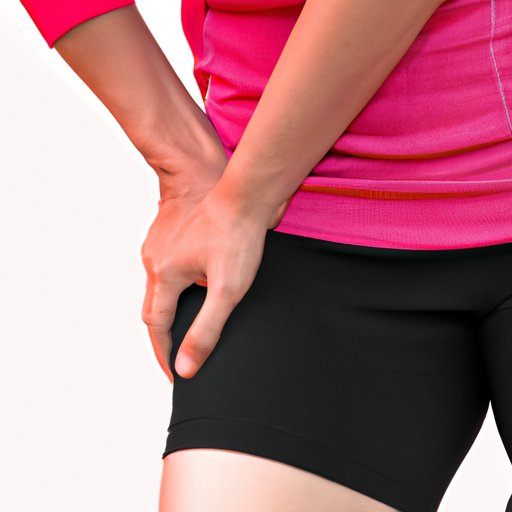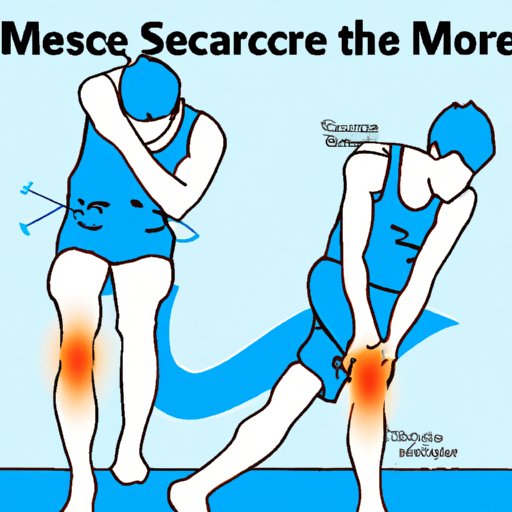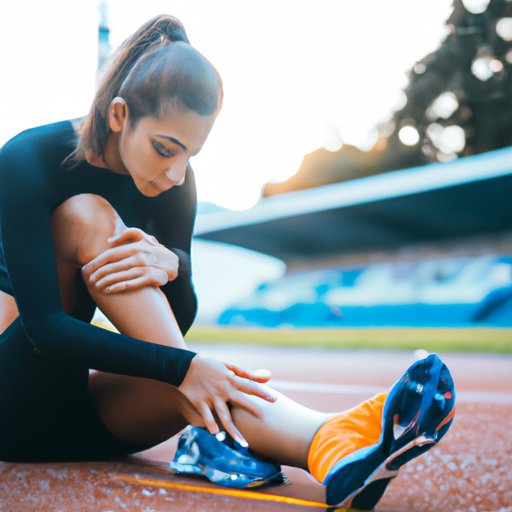Introduction
Muscle soreness is an uncomfortable feeling that occurs after physical activity. It’s usually caused by a build-up of lactic acid in the muscles, which happens when you do strenuous activities like weight lifting or running. The pain can range from mild to severe and can last anywhere from a few hours to several days. Understanding the causes and symptoms of muscle soreness can help you manage your pain and get back to working out as soon as possible.

Causes of Muscle Soreness After Exercise
The most common cause of muscle soreness is eccentric muscle contraction. Eccentric contractions occur when a muscle lengthens while under tension. This can happen when you’re doing exercises like squats, lunges, and push-ups. During these exercises, the muscle is forced to work harder than usual, resulting in muscle fatigue and soreness.
Another cause of muscle soreness is microtrauma. Microtrauma is tiny tears in the muscle fibers that occur when a muscle is overworked. These tears cause inflammation and swelling, leading to pain and soreness. Dehydration can also lead to muscle soreness because it prevents the body from getting enough oxygen to the muscles.
Finally, overloading is another cause of muscle soreness. Overloading occurs when you do too much, too soon. For example, if you try to lift more weight than you can handle or run faster than your body is used to, your muscles won’t be able to keep up and will become sore.

Understanding Delayed Onset Muscle Soreness
Delayed onset muscle soreness (DOMS) is a type of muscle soreness that occurs 24-48 hours after a workout. It’s caused by microscopic tears in the muscle fibers that occur during exercise. DOMS is often accompanied by stiffness, swelling, and tenderness. The severity of DOMS depends on the intensity of the workout.
According to a study published in the Journal of Strength and Conditioning Research, “DOMS is primarily caused by eccentric muscle contractions, which are muscle contractions that occur when a muscle lengthens while under tension.” The study also found that other factors such as dehydration and overtraining can contribute to DOMS.
How to Manage Post-Workout Muscle Soreness
Stretching is one of the best ways to manage post-workout muscle soreness. Stretching helps reduce tension in the muscles and increases blood flow, which can speed up the healing process. It’s important to stretch both before and after exercise to prevent muscle soreness.
Hydration is also important for managing muscle soreness. When you’re dehydrated, your muscles don’t get enough oxygen, which can lead to fatigue and soreness. Make sure you drink plenty of water before, during, and after exercise to stay hydrated.
Nutrition is also important for post-workout recovery. Eating a balanced diet with plenty of protein, carbs, and healthy fats can help your body recover more quickly after exercise. It’s also important to get enough rest and recovery time between workouts to allow your body to repair itself.

Tips for Reducing Muscle Soreness After Working Out
One of the best ways to reduce muscle soreness after working out is to warm up properly. A proper warm-up helps prepare your body for exercise by increasing blood flow to your muscles and loosening up your joints. This helps reduce the risk of injury and can help reduce muscle soreness.
It’s also important to avoid overloading. Overloading occurs when you do too much, too soon. If you push yourself too hard, your muscles won’t be able to keep up and will become sore. Start slow and gradually increase the intensity of your workouts to give your body time to adjust.
Taking breaks during workouts can also help reduce muscle soreness. When you take a break, your body has time to recover and get rid of any lactic acid build-up in your muscles. Finally, don’t push yourself too hard. Listen to your body and stop when you start to feel fatigued.
The Benefits of Muscle Soreness After Exercise
Although muscle soreness can be uncomfortable, there are some benefits to it. For example, muscle soreness can indicate that your muscles are growing stronger and more flexible. This can help improve your strength and endurance, as well as increase your range of motion.
In addition, muscle soreness can help reduce your risk of injury. According to a study published in Sports Medicine, “Soreness can act as a warning sign for athletes, alerting them to potential injuries before they occur.”
Steps to Take for Optimal Recovery After a Workout
Optimal recovery after a workout is key to preventing muscle soreness. To ensure optimal recovery, make sure you get enough sleep. Sleep helps your body heal, so aim for 7-9 hours of quality sleep each night. Eating nutritious foods can also help your body recover by providing it with the fuel it needs to repair itself.
Rehydrating is also important after a workout. Drinking plenty of water helps restore fluids lost through sweat and can help reduce muscle soreness. You can also use heat or ice therapy to reduce soreness. Heat helps relax tense muscles, while cold helps reduce inflammation. Both methods can help reduce pain and discomfort.
Conclusion
Muscle soreness is an uncomfortable feeling that occurs after physical activity. The most common cause of muscle soreness is eccentric muscle contractions, but dehydration, microtrauma, and overloading can also lead to soreness. To reduce muscle soreness after working out, make sure you warm up properly, avoid overloading, take breaks during workouts, and don’t push yourself too hard. In addition, taking steps for optimal recovery after a workout, such as getting enough sleep, eating nutritious foods, and rehydrating, can help reduce soreness and speed up the healing process.
(Note: Is this article not meeting your expectations? Do you have knowledge or insights to share? Unlock new opportunities and expand your reach by joining our authors team. Click Registration to join us and share your expertise with our readers.)
